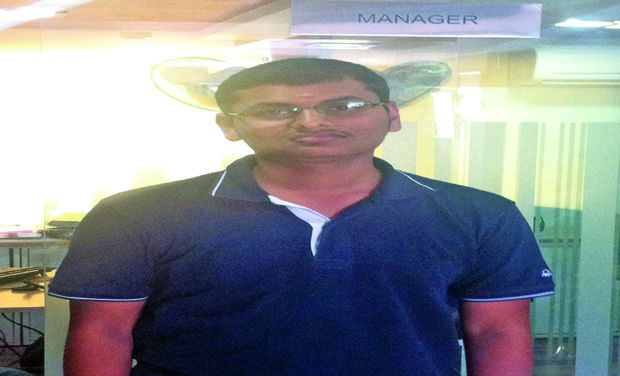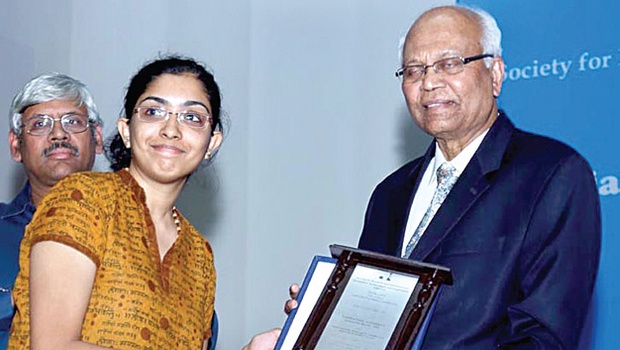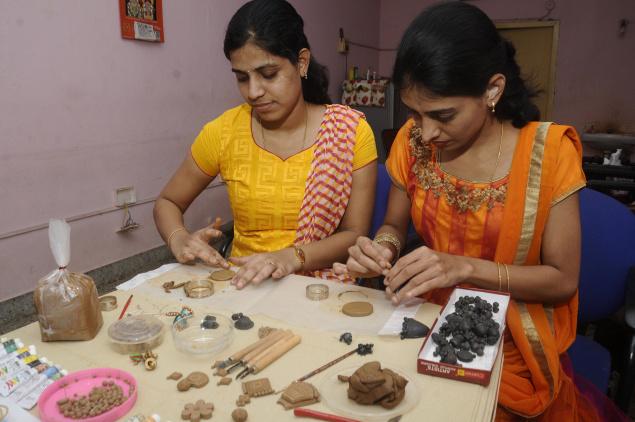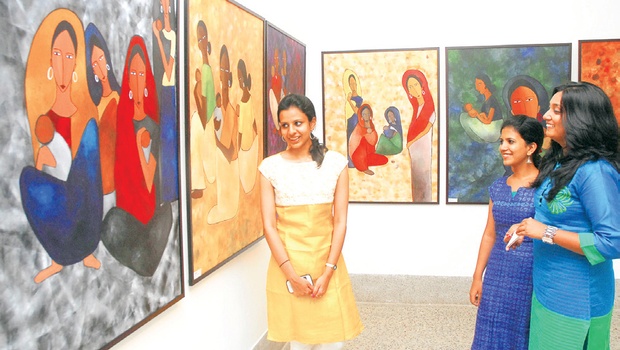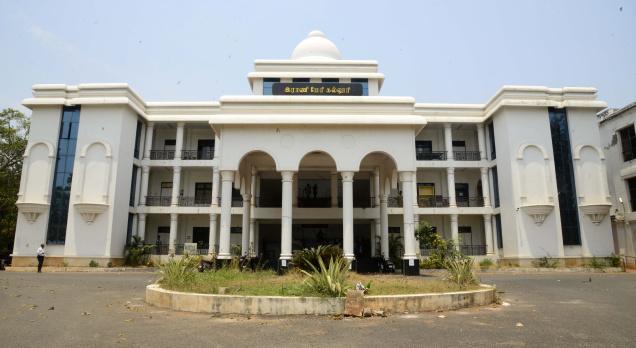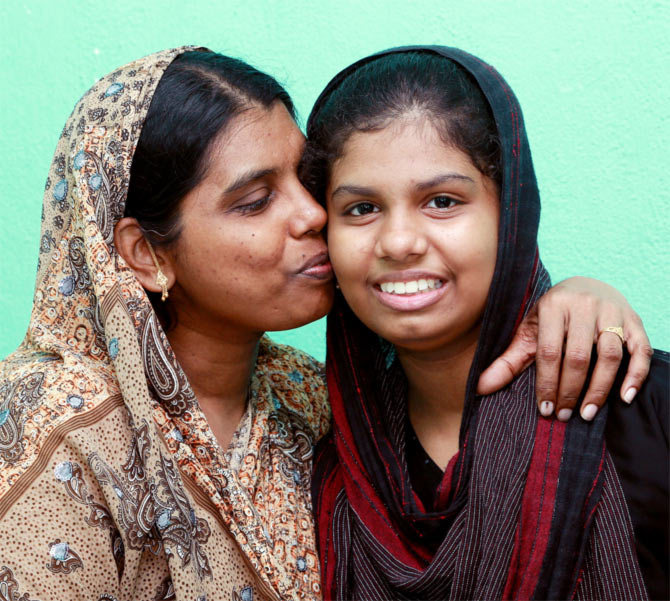
Photographs: Sreeram Selvaraj
Shobha Warrier/Rediff.com
Meet Fathima Shabana who’s cleared her JEE (Main) and wants to study computer science from an IIT.
It has been a week since the Joint Entrance Examination (JEE) results were released, and yet, the smile on 17-year-old Fathima Shabana’s face has still not diminished. After all, she has been working hard for the last four years; and she has just cleared the JEE (Main). This means that she has already made the grade to go to an Indian Institute of Information Technology (IIIT) or National Institute of Technology (NIT) or state engineering institutions that will offer seats on the basis of JEE (Main) merit list like the Anna University in Tamil Nadu.
If she manages to make it through to the JEE (Advanced) examination on the May 25, she might well make it into an IIT!
Fathima’s is no mean achievement, especially when you look at her background. Her father, Shahul Hameed, dropped out after Class VIII and her mother didn’t continue past primary school.
Ever since he made his way to Chennai from Siruthondanalloor village in Thoothukudi district in search of a job almost two decades ago, Shahul Hameed has been washing dishes and serving food at a pushcart eatery.
His day starts very early in the morning, before the city wakes up, and ends only by 10 at night. For all of this, he takes home Rs 300 a day.
Ever since he was told of his daughter’s phenomenal achievement, he has been a happy and proud man. “My daughter has made me very proud. She was always an extremely hard working child, and I always knew that she would pass all of her exams with flying colours. I could not afford to send her to a private school. So, I sent her and my son to a corporation school so that we didn’t have to pay for their fees and textbooks.”
“It has always been her dream to be an engineer. But I earn only Rs 300 a day; I do not have the wherewithal to send her to an engineering college. I grow distressed just thinking of shattering my daughter’s dreams. But I am sure some good soul will come forward to help her pursue her dreams,” he says, while making dosas for a customer.
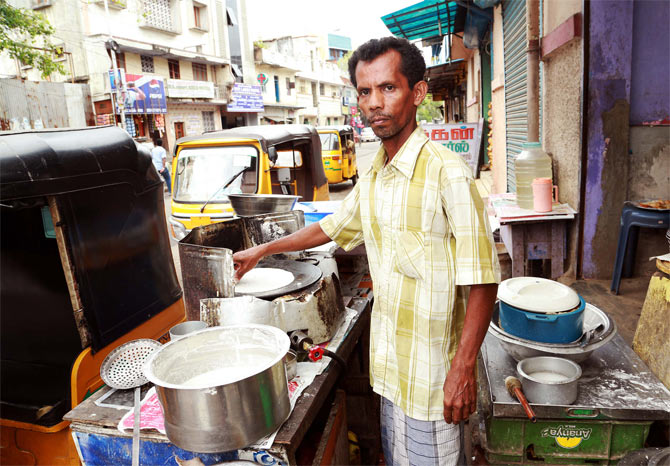
Photographs: Sreeram Selvaraj
Her equally proud mother, Bahira Begum, said, “Neither me nor my husband could study much. But we made sure that our children studied, and studied well at that. We thought we should give them an education even if we had to borrow money to do so. We first sent Fathima to a private school, but we soon found that we could not afford to educate our children in a private school. We had to then move both of them to a corporation school. But in spite of that, not once did I have to tell Fathima to sit down and study. She was always happier among her books than she was playing with other girls of her age. She would sit at home and write something all the time.
In fact, I would tell her to take a break and go out and play. But she never would.”
Bahira remembers that her daughter never asked her for a new dress, or expressed her desire to go watch a movie. “She was not interested in anything but her studies. Even if we called her to go out, she would not come. Even as a small child, she was obsessed with her education and always wanted to come first in class.”
“God has been kind to me. It was because of God’s gift that I was able to focus on my education. I love Mathematics and can solve mathematical problems for hours together without feeling bored,” Fathima said.

Photographs: Sreeram Selvaraj
When she was in Class IX, a private IIT-JEE coaching institute came to her school to select good students and offer them free coaching. She was among the nine students selected after a screening test.
When she told her mother that she wanted to attend JEE coaching classes, she told her that they could not afford to send her to a tuition class. But her school head master was insistent.
“He came home and convinced us that Fathima would never get such an opportunity in her life, and that we should not deny it to her. We had to agree to send her to coaching classes.”
As the institute was far away from her home, it was past 9 in the evening by the time she got back home. “So, I would study until midnight and get up by 6 in the morning to do all the home work.”
So focussed was she on her studies that from first standard onwards, she was either first or second in school.
After scoring 83 per cent in her Class X Board exams, she went back to the same school and continued her preparation for the JEE. “I was happy after I finished the JEE (Main) exam. I knew I did well, especially my Mathematics paper. Yes, I was expecting a good result, but when I finally saw online that I had cleared the Main exam, I couldn’t believe it. I called my father and conveyed the good news to him. He was overjoyed, as was my mother.”
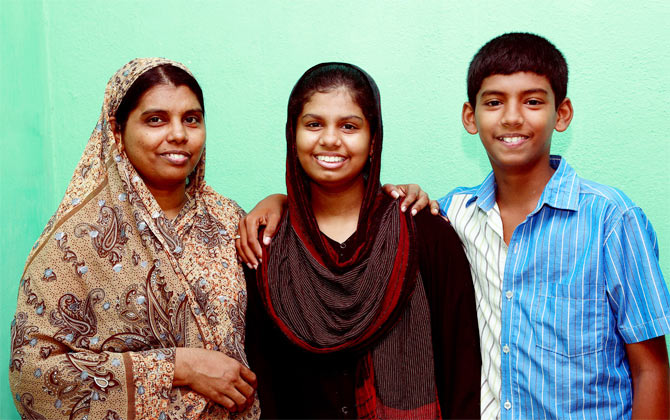
Photographs: Sreeram Selvaraj
Bahira also was confident of her daughter getting in. “I know nothing about colleges. I only knew that she would get admission in to a very good college somewhere in India because of how hard she worked. However, in our community, we do not send our girls to far-off places. So, I hope she gets admitted to an engineering college in Chennai.”
Whenever Fathima expressed her desire to become an engineer, her mother would tell her not to dream so high because of the financial constraints they faced in the family.
Now that she is going to write the JEE (Advanced) exam on May 25, her dream is to get selected to study Computer Science at an IIT. “I love computer science. I do not have a computer at home, but we have one in our school that we get to operate. I enjoy working on the computer.”
Fathima’s brother, Arshad Saliq, who studies in Class IX, has someone to look up to now. “I also top my class, but now, I want to emulate my sister. I want to study in an IIT.”
Fathima’s dream is “to get a good job so that my father will not have to struggle as hard to make ends meet.”
The family strongly believes that it was all because of the blessings of God that Fathima could achieve something that her parents could never even dream of.
“When we thank God, we also pray that He would show us a way to give Fathima what she wants. When we let her study, not even in our wildest dreams did we think that she would make both of us, practically illiterate as we are, so proud,” said Bahira on a parting note.
source: http://www.rediff.com / rediff.com / Home> Get Ahead / May 14th, 2014
